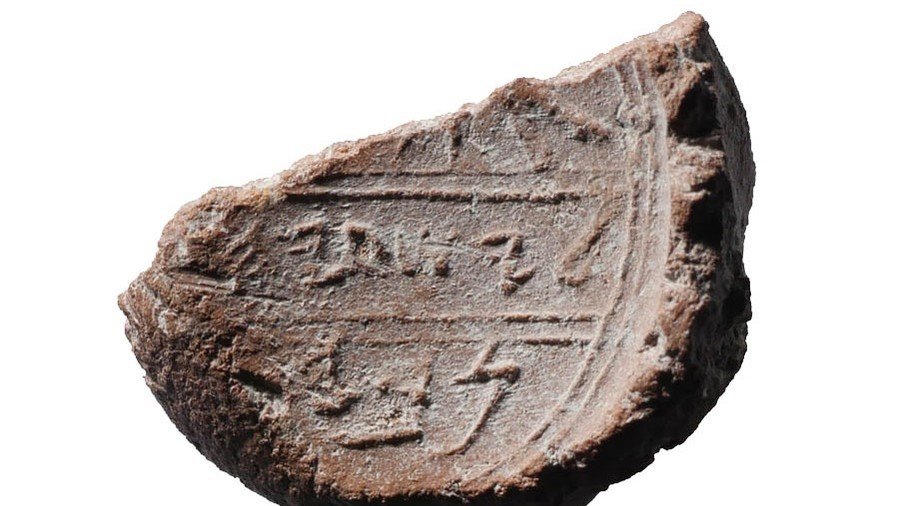Physical evidence prophet Isaiah existed discovered in Jerusalem

An ancient clay seal discovered in Jerusalem may have belonged to the prophet Isaiah and could be the earliest physical evidence of the biblical figure.
"We appear to have discovered a seal impression, which may have belonged to the prophet Isaiah, in a scientific, archaeological excavation," lead archaeologist Eilat Mazar of the Hebrew University of Jerusalem’s Institute of Archaeology said in a statement.
The clay seal was discovered in Jerusalem in 2009, during excavations at the Ophel in East Jerusalem. It contains the word, Yesha’yahu, the Hebrew for ‘Isaiah.’
It’s been damaged over time, making it more of a challenge to determine which Isaiah it refers to. The upper part is missing while the lower left part is damaged.
8-meter tall section of Western Wall, Roman theater unearthed in Jerusalem (PHOTOS) https://t.co/GErT1lmWye
— RT (@RT_com) October 18, 2017
The seal has a second word which isn’t legible as a letter is believed to be missing. If that missing letter was the Hebrew letter aleph, it would read ‘prophet’ in Hebrew, and could be the first evidence of the prophet’s existence, aside from the Bible. However, if the letter isn’t an aleph, the word could be a location or a father’s name.
"The critically important letter that would be needed to confirm that the second word is the title ‘prophet’ is an aleph,” Christopher Rollston, professor of Semitic languages at George Washington University, told National Geographic. “But no aleph is legible on this bulla [clay seal], and so that reading cannot be confirmed at all."

Rollston also pointed to the fact that the Bible commonly refers to “the prophet” rather than simply “prophet,” casting further doubt on the archaeologists’ theory. "In short, if this were the word 'prophet,' I would have liked to have seen the word 'the,' as in 'Isaiah the prophet,’” he said.
Isaiah advised King Hezekiah, who ruled the area between the eighth and seventh century B.C. The seal was found 10ft (3 meters) from a seal impression belonging to King Hezekiah at an excavation site in the Old City of Jerusalem, at the base of the southern wall of Temple Mount, or Haram al-Sharif. The area is a holy site for Christians, Jews and Muslims, and is home to the al-Aqsa mosque and the Dome of the Rock.
Experts dig for Biblical tabernacle that ‘held Ark of the Covenant’ https://t.co/ejWDKCjA9K
— RT (@RT_com) July 27, 2017
The site contained a number of impressions stamped on clay, Mazar explains in Biblical Archaeological Review. The bulla, each measuring about 0.4 inches (1cm) in diameter, had been stamped with a seal bearing the name of its owner.
The excavation site included a number of seals belonging to a family named Bes, a name which isn’t known from the Bible.
This isn’t the first time two seal impressions of people mentioned together in the Bible have been found near one another. During the City of David excavations which took place between 2005–2008, seal impressions of Yehukhal ben Sheleḿiyahu ben Shovi and Gedaliyahu ben Pashḥur, high officials in King Ẓedekiah’s court (Jeremiah 38:1), were found only a few feet apart, Mazar said.
If you like this story, share it with a friend!














